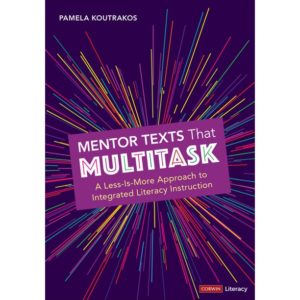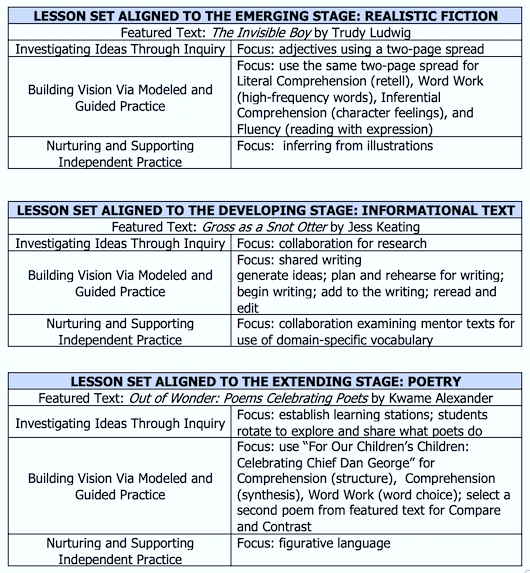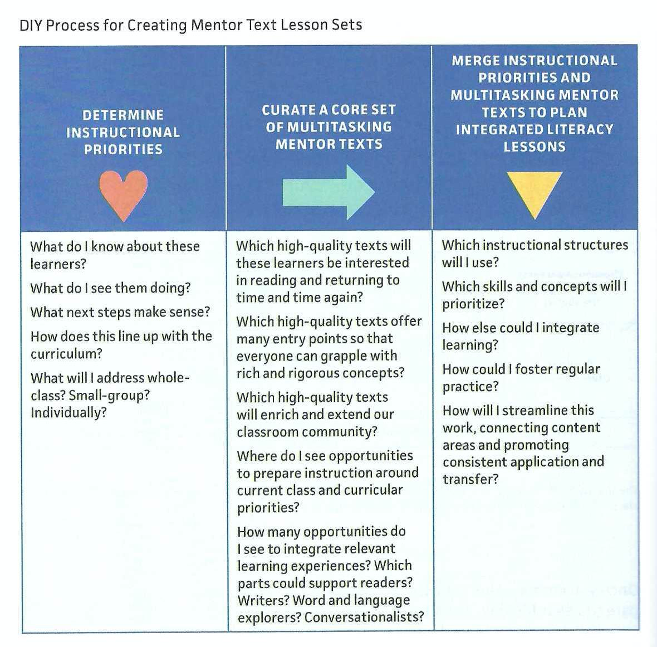Multitasking Mentor Texts for Integrated Literacy
Mentor Texts That Multitask: A Less-Is-More Approach to Integrated Literacy Instruction
By Pamela Koutrakos
(Corwin Literacy, 2022 – Learn more)

Mentor Texts That Multitask: A Less-Is-More Approach to Integrated Literacy Instruction is the book ELA teachers have been waiting for! It makes your life easier. It simplifies your planning. It makes sense.
I was hooked on page one by Pamela Koutrakos’ three confessions:
- My passion for books borders on obsession.
- With the exception of professional texts, I rarely read books intended for adults.
- I have always prioritized reading aloud to students.
Been there, done that! I want to be her friend.

Part I: The Essentials of Multitasking Mentor Texts
“A mentor text becomes a multitasking mentor text when it provides vision, purpose, and confidence for taking across-the-day learning risks.” (p.11) Throughout Chapter 1, the author builds the foundation for understanding multitasking mentor texts and integrating literacy practices.
As Koutrakos shares her experiences, the reader will discover the value of adapting this approach to meet the needs of their students. Included in Chapter 2 is an overview, in chart form, of the most common instructional strategies.
Part II: Teaching With Multitasking Mentor Tasks
Chapter 3 Wordless Texts and Images
Chapter 4 Graphic Texts
Chapter 5 Realistic Fiction
Chapter 6 Creative Nonfiction: Biographies, Autobiographies, and Memoirs
Chapter 7 Informational Texts
Chapter 8 Poetry
Following the brief introduction or explanation for chapters 3 – 8 is this statement:
“NOTE: Remember to always first enjoy featured texts as a community of readers. Then, revisit the texts, repurposing it as a mentor text for any number of instructional priorities and goals.”
At the conclusion of these chapters, the author spotlights a variety of teaching and learning opportunities which show the flexibility of multitasking mentor texts. She calls this feature Stretch Up and Back Suggestions.
Because Koutrakos is a teacher, she’s created a very user-friendly layout for these six chapters. Each chapter contains three sets of lessons that each address the three stages of learning: emerging, developing, and extending. Trust me, you can glean ideas from each stage!
As you become familiar with the instructional frameworks – inquiry and gradual release – you will see how beneficial multitasking mentor texts becomes to instructional time. Here are some notes I made from each stage in each genre.
Part 3: You’ve Got This
In Chapter 9 the author explains the process she uses for creating multitasking lesson sets. This chart (p. 230) provides an overview of that process.
By the time you finish Chapter 10, Stepping Aside: Student-Initiated Learning with Multitasking Mentor Texts, your head will be spinning with ideas to enhance learning in your classroom. Step back, breathe, and be inspired!
Mentor Texts That Multitask by Pamela Koutrakos will be an asset to your professional library. It will make your life easier and simplify your planning because it makes sense.
For a taste of Pam Koutrakos’ work, read her recent MiddleWeb articles, Save Teaching Energy: Multitask Mentor Texts and Community-Centered Instructional Coaching.
Anne Anderson always knew she wanted to be a teacher. She graduated from East Texas Baptist University with an English major and History minor and did graduate work at Louisiana State University and Louisiana Tech University. After teaching 8th graders for 24 years, Anne served as a content coach. Since retiring in 2011, Anne has worked as an educational consultant, presenting at national conferences and onsite trainings for public and private schools.
Calendar Celebrations: March, April, May is the third book in Anne Anderson’s series on resources for months of the year. (She wrote about the first one here and the second one here.) Anne has also published articles in IDEAS Plus and Voices from the Middle, publications of the National Council of Teachers of English. She is a frequent reviewer of professional books for MiddleWeb.com.






































